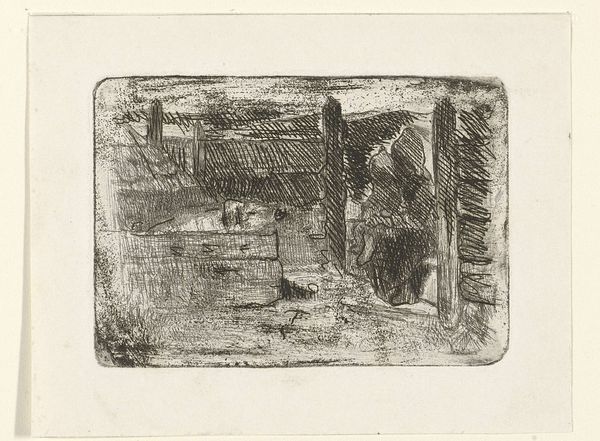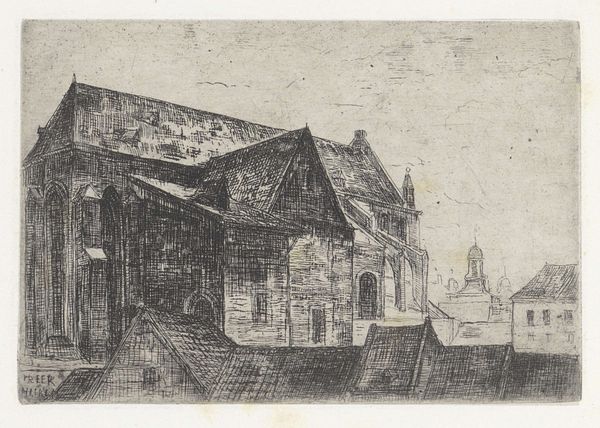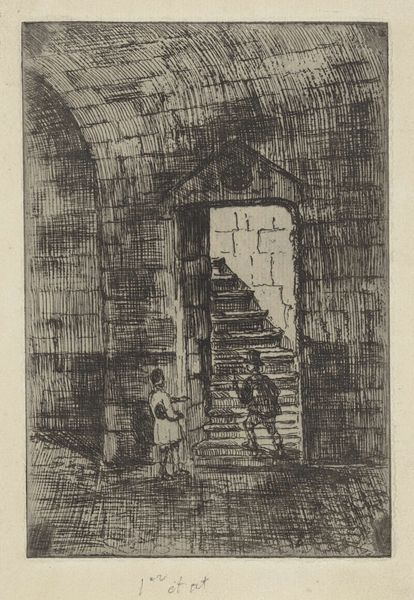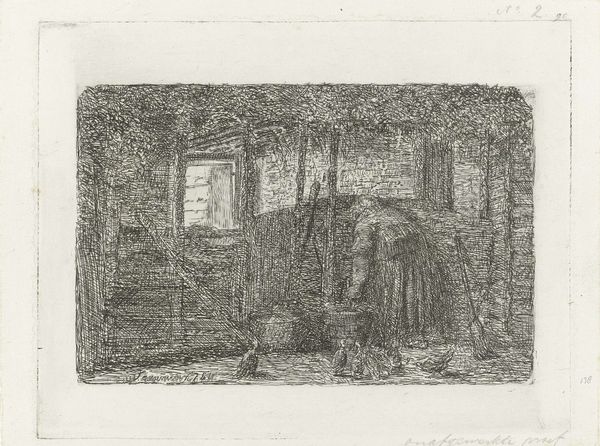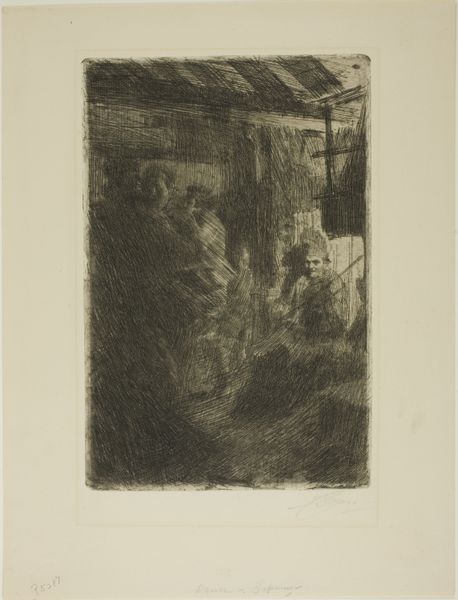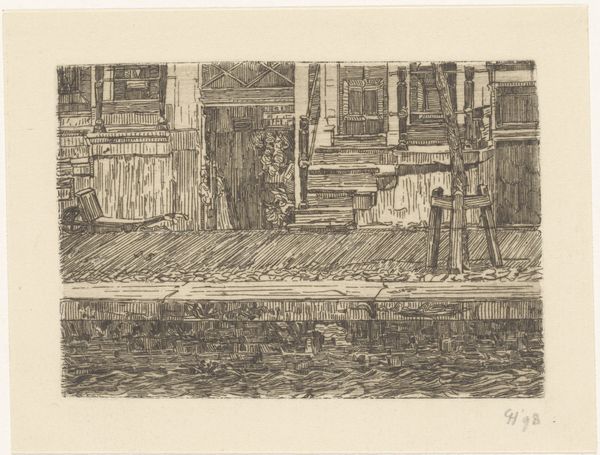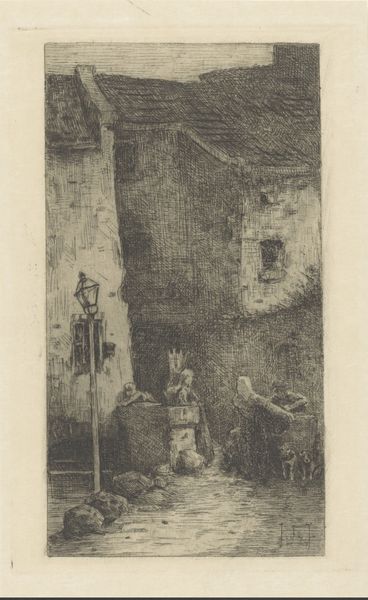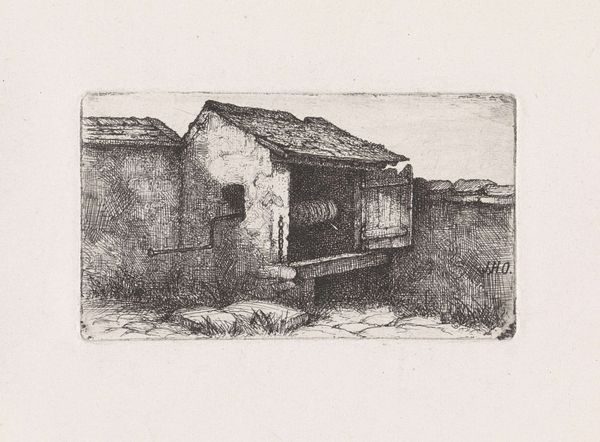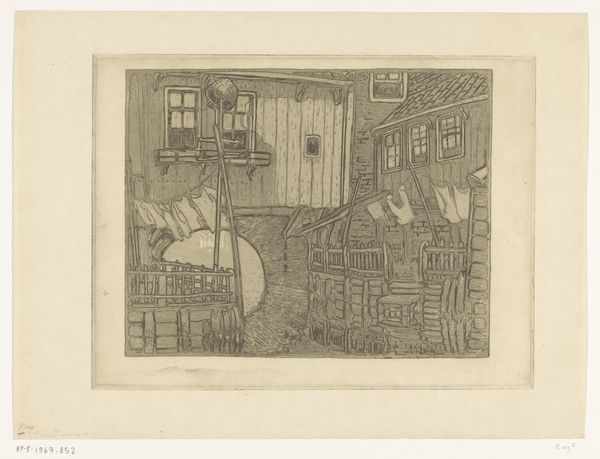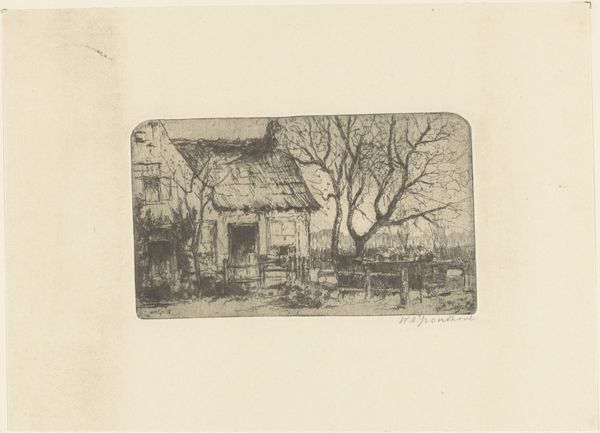
print, etching
#
dutch-golden-age
# print
#
etching
#
landscape
#
cityscape
#
realism
Dimensions: height 155 mm, width 194 mm
Copyright: Rijks Museum: Open Domain
Editor: This is Jacobus Ludovicus Cornet's etching, "Waterslootse Poort te Delft," dating from 1825 to 1882, housed in the Rijksmuseum. It has a rather somber feel to it, despite depicting a cityscape. What cultural weight do you think an image like this would carry for viewers? Curator: The Waterslootse Poort, once a functional city gate, becomes a vessel of collective memory in Cornet’s rendering. Notice the decay, the almost mournful reflection in the water. Do you see how the meticulous details—the crumbling brick, the overgrown vegetation—contribute to a sense of history slipping away? Editor: I do, almost like nature is reclaiming the city. But the detail is remarkable for an etching. Curator: Exactly. And that level of detail links it, subconsciously perhaps, to the Golden Age's tradition of precise realism, invoking a powerful sense of place. It speaks of continuity and change. Think of the gate not just as architecture, but as a symbolic threshold – between past and present, safety and exposure. How do these symbols affect us on an emotional level? Editor: That’s fascinating. It's more than just a building; it's a marker of time, progress, and even loss. I hadn’t considered how the medium itself, etching, adds to that feeling through its inherent texture. Curator: Indeed. And remember that every artistic choice serves to trigger, awaken cultural understanding through a visual language inherited over centuries. It is a somber, powerful encoding of what has gone and may, eventually, all go. Editor: I’ll certainly look at cityscapes differently now! I’m going to look for more symbols. Curator: It is a powerful and ancient exercise, interpreting these symbols that resonate with our deeper selves.
Comments
No comments
Be the first to comment and join the conversation on the ultimate creative platform.
